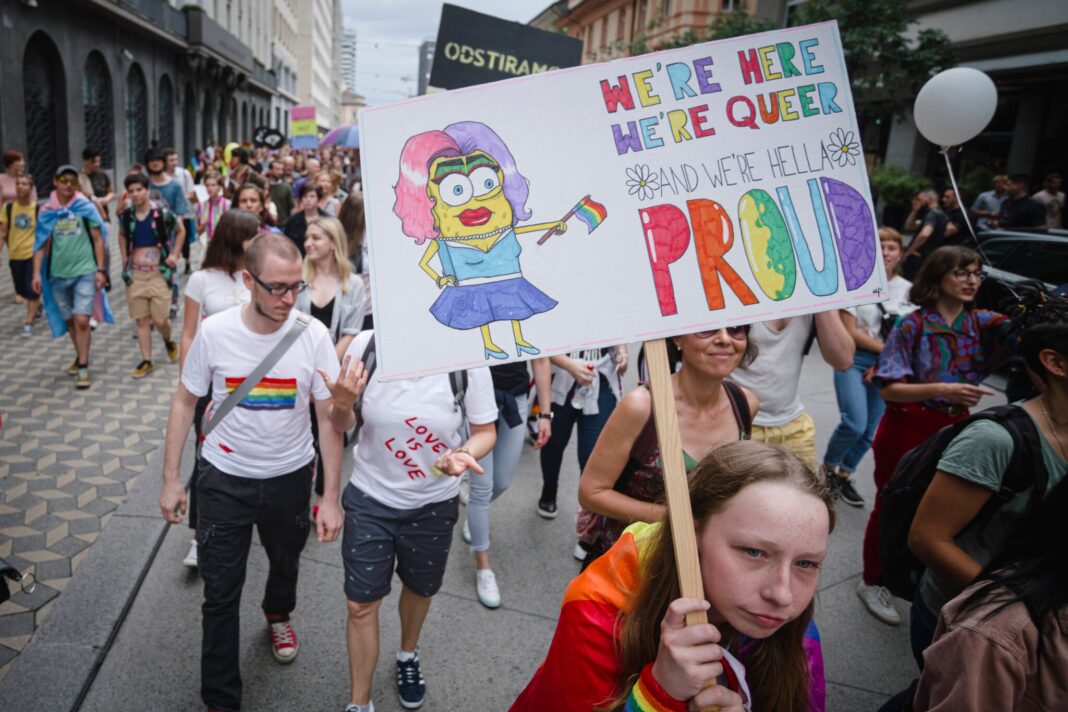By: Nina Žoher / Nova24tv
The LGBT ideology is becoming more aggressive year by year. If this was once mainly present in American schools, it has now found its way into European schools as well. Slovenian schools are, of course, no exception. In the official Catalogue of continuing education and training programmes for professionals in education for the school year 2021/2022 of the Ministry of Education, Science and Sport of the Republic of Slovenia, you can also find a lecture by LGBT activist organisation Legebitra on “LGBT basics with emphasis on transgenderism”. However, the majority of Slovenes are clearly not in favour of all this. Namely, 61.7 percent of respondents have a negative opinion about the inclusion of content about same-sex people and the promotion of homosexual and transsexual content in Slovenian schools, reveals a recent public opinion poll prepared for Nova24TV by the Parsifal agency.
The results of the poll conducted by the Parsifal public opinion agency between August 30th and September 2nd show that the majority (44.7 percent) of respondents believe that the inclusion of same-sex content and the promotion of homosexual and transsexual content in Slovenian schools is unnecessary. 32.0 percent of respondents think it is necessary. Given that 17.0 percent of those who believe that this is harmful, it can be concluded that as many as 61.7 percent of respondents have a “negative” opinion.
Men are more reluctant to include LGBT content in schools
If we look at the cross between the content variable and demographic variables, we can see that among those who believe that the inclusion of content about same-sex people and the promotion of homosexual and transsexual content in Slovenian schools is unnecessary, men predominate. Among those who believe that this practice is harmful, men also predominate. LGBT ideologies in schools are most favoured by those between the ages of 18 and 34, while those in the 35 to 54 age group are unfavourable. Most of those who consider this a harmful practice belong to the age group of 55 years and over. Those who are most in favour of LGBT ideologies in schools have a higher education, while those who are not in favour have a vocational education.
Most do not support the adoption of children in same-sex communities
As LGBT members are also in favour of the possibility for same-sex couples to adopt a foreign child, this question was also included in the survey. The majority (53.2 percent) of respondents said they did not support the idea that same-sex couples could adopt a foreign child, while 40.7 percent of respondents supported it.
The intersections between the demographic and content variables reveal that among those who are more in favour of the possibility that same-sex couples can also adopt a foreign child are women and those in the 18-34 age group. They are least in favour in the oldest age group (55 years and older), followed by the age group between 35 and 54 years. Judging by education, those with higher education are most in favour of such adoptions, followed by respondents with secondary education.
The survey, conducted between August 30th and September 2nd, included 719 respondents, of whom 50 percent were women and 50 percent were men. The mean age was 52.3 years and the standard deviation was 16.6 years. The majority of respondents were from the oldest age group (44.2 percent), the middle age group was slightly less represented (37.4 percent), and the youngest age group was the least represented (18.4 percent).
Most respondents have completed secondary school (32.1 percent), followed by those with completed higher education (26.8 percent), 22.2 percent of respondents have a vocational school, and 18.9 percent of respondents have completed primary or incomplete primary school. Most respondents come from a village or hamlet (53.2 percent), followed by a town (29.0 percent) and a smaller city (17.8 percent). Most respondents come from the Osrednjeslovenska region (24.2 percent), followed by Podravska (15.8 percent) and Savinjska region (12.4 percent).

